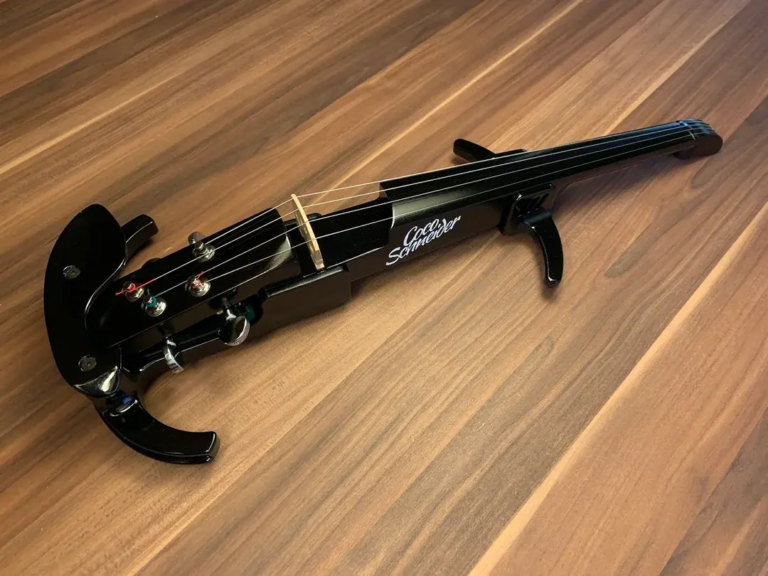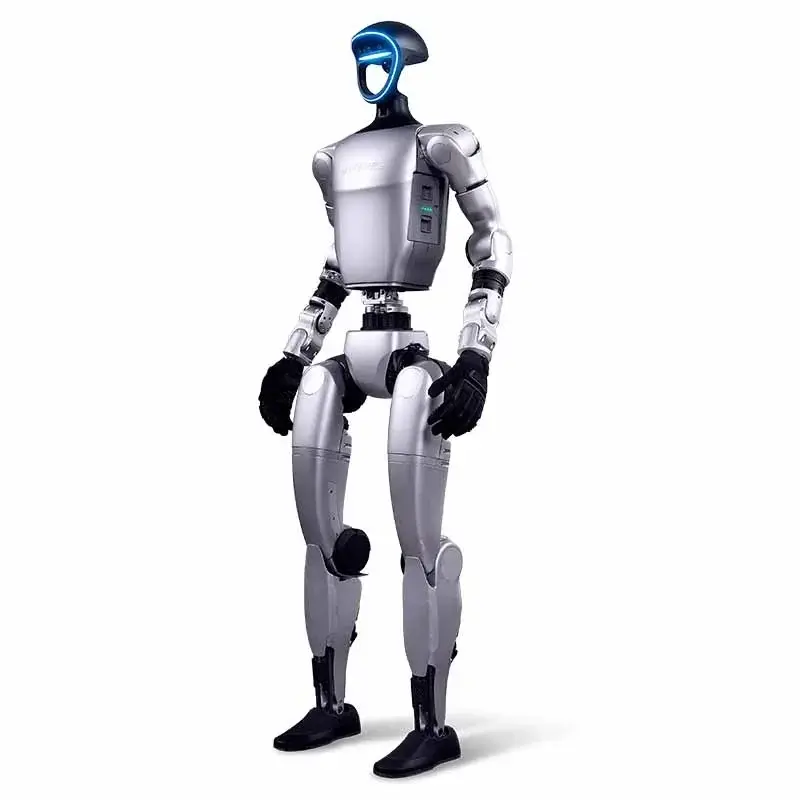Forged for Excellence: The Peak of China’s Stainless Steel CNC Processing
Stainless steel. The name evokes images of unrivalled durability, corrosion resistance and smooth, long-lasting finishes. It is the backbone of the industry that demands the highest performance: aerospace components that fight extreme environments, medical equipment that requires biocompatible and sterile, ultimately precise semiconductor equipment, food processing machinery that requires sanitary surfaces, and ship applications to ruthless saline. However, converting this stubborn alloy into complex, highly resistant parts that drive innovation requires more than standard machining. It requires the pinnacle of precision manufacturing technology: advanced Five-axis CNC machining. When seeking the highest level of this ability in China’s vast manufacturing landscape, a name stands out for its proficiency and comprehensive service – Greglight CNC machining.
Stainless Steel Challenge: Why All Processing Is Not Equal
On the surface, stainless steel seems to be the preferred choice due to its characteristics. However, unlocking its potential through machining presents unique obstacles that separate abilities from those of true abilities:
- Work hardening: Many stainless steel grades (especially austenite types, such as 304, 316) harden rapidly under pressure from cutting tools. This can lead to excessive wear of the tool, unpredictable machining forces, potential workpiece distortion and surface defects, if not managed with surgical precision.
- Heat and heat management: The relatively low thermal conductivity of stainless steel captures heat in the cutting area. This heat accelerates tool wear, reduces dimensional accuracy, and risks metallurgical changes, damaging the inherent corrosion resistance of the material. It is crucial to effectively dissipate this heat.
- Chip control: Stainless steel usually forms long, strong glue-like chips that can wrap tools, scratch the surface of the finished product and disrupt the processing process. Optimizing chip evacuation requires complex coolant delivery and process parameters.
- Chemical reactivity: Under heat and pressure, certain stainless steel grades react with tool material, resulting in a built-in edge (BUE). This irregular deposit weld to the edge of the tip further destroys the stability of the process, reducing finish and accuracy.
- Harsh finishes: Typically, stainless steel components require a very smooth finish (RA <0.8μm) for functional (sealing) or aesthetic use. Achieving this while competing with the above challenges is an art form.
Precisely machining stainless steel to meet strict specifications is not only difficult; it requires no professional expertise and cutting-edge technology in every machine shop. This is where China’s leading professional manufacturers (such as Greatlight) use advanced 5-axis CNC machining to redefine possibilities.
Five-axis revolution: conquering complexity and precision
Five-axis CNC machining is not only an incremental upgrade for 3-axis machines. It represents a paradigm transfer of subtraction manufacturing. Imagine a machine that can manipulate parts or cutting tools along traditional X, Y and Z linear axes at the same time Rotate about two rotation axes (usually A and C). This kinematic freedom unleashes the huge advantages of stainless steel:
- Complex geometry in a single setup: Processing complex functions such as deep cavity, undercut, organic curves and multidirectional holes that require multiple settings (and tolerances) on a 3-axis machine. this "One-to-one" The method greatly reduces lead time, eliminates reference shift errors, and improves repeatability of complex stainless steel components.
- Optimal tool orientation and reduce tool deflection: Continuously positioning tools perpendicular to the work surface minimizes the ability of the tool. Shorter tool paths and continuous engagement angles reduce vibration and tool deflection, which is essential to maintain the accuracy of difficult mechanical stainless steel. This also allows for the use of shorter, harder cutting tools, further improving accuracy and surface effect.
- Faster material removal rate (MRR): By optimizing tool contact angles and utilizing the machine simultaneous movement, five-axis machining can often employ higher feed rates and deeper cutting, even on hard materials. This accelerates the production cycle without sacrificing quality.
- Unparalleled surface quality: Continuous, smooth tool paths are achieved by simultaneously performing five-axis movements, inherently creating a superior finish on stainless steel (e.g., stainless steel). Combined with an optimized cutting strategy, perfect cosmetic and functional surfaces can be achieved.
- Solve thin walls and exquisite features: Reducing vibration and deflection is essential for fragile stainless steel components. Five-axis machines provide the stability and direct tool access required to successfully machining these features without the need for distortion or chat uneven markings.
Why Greatlight embodies China’s leading stainless steel 5-axis CNC function
While several stores operate five-axis machines, Greatlight is unique because it focuses on manufacturers. Provide solutions Responsive stainless steel applications. Their commitments manifest in tangible assets and practices:
- Tip five-axis machinery: They invest in state-of-the-art five-axis machining centers from leading global manufacturers. These are not modified machines, but specialized power plants designed specifically for high torque, incredible rigidity, thermal stability and microscopic level accuracy (which can achieve ±0.005mm). Complex linear motor drivers and direct drive rotary tables ensure smooth motion and absolute position accuracy.
- Materials Science Expertise: Greglight engineers have deep metallurgy knowledge. They understand the specific machining characteristics of duplex steels (eg, 2205), precipitation-hardening grades (eg, 17-4PH), aggressive stainless (eg, 316L), and common workhorses like 303 and 304. This dictates precision tool selection (specialized carbide grades, geometries, coatings like AlTiN) and meticulously developed cutting parameters for each alloy and component requirement.
- Proprietary process engineering: In addition to machine settings, they honed their custom processes. This includes dynamic labor solutions to minimize distortion, advanced coolant strategies (via spindle coolant high pressure, targeted nozzles, and sometimes low pressure nozzles) to manage heat and chips, as well as adaptive tool path strategies for dynamically adjusting feed/speed based on real-time cutting conditions.
- Comprehensive internal post-processing: Recognizing that machining is usually just a step, Greatlight provides a truly one-stop service. Their fully integrated finish features include:
- Precise grinding/hardening: Used to achieve ultra-fine finishes or ultra-tight tolerances.
- Advanced finishes: Electropolishing (essential for medical/food grades), passivation for enhanced corrosion resistance, precision bead blasting, vibrating finish.
- Heat treatment and stress relief: Re-processing or reaching specific material properties of pH grade is critical to stabilizing parts.
- Highly accurate quality control: Features high-end CMM, optical comparator, surface roughness tester and a dedicated QA protocol (dimensional accuracy, surface finish, hardness, cleanliness) dedicated to stainless steel verification.
- Focus on customization and speed: Expertise in rapid prototypes using the agility of five-axis machining and simplified processes and Low to medium volume production. Their engineering team works with customers to optimize design of manufacturability (DFM), ensuring the fastest route from concept to completion of precision stainless steel sections. "Quick customization at the best price" It is the core commitment.
- Strict quality mentality: From material traceability (certified mill source) to final inspection, adhere to strict protocols, from material traceability (certified mill source) to running a strict quality management system. This commitment to diet (expert, authority, trustworthiness) has been deeply rooted in order to ensure that parts meet international standards (ISO, AS9100 often enterprise-grade) and required customer specifications.
Conclusion: Successfully accurate cooperation with stainless steel
Navigating the complexity of high-performance stainless steel machining is a huge challenge. Achieve consistent results, especially for complex geometry and critical tolerances, require more proficiency than general CNC capabilities. Gremight distinguishes itself in Chinese manufacturing through its specialized advanced applications Five-axis CNC machining technologydeep material expertise and coverage One-stop solution This solves every step from the original inventory to the final completed precise components. They’re Quick customizationstrict Quality controlcompetitive values make them a compelling choice for engineers, designers and procurement experts seeking uncompromising precision metal parts.
Whether it is prototyped to revolutionary medical equipment, expanding the production of marine hardware, or requiring absolute reliability of aerospace components, investing in top-grade stainless steel CNC machining is not optional; it is basic. Greatlight offers technical advantages and proven expertise to turn your most challenging stainless steel requirements into reality.
Customized precision stainless steel parts today. Contact Greatlight Engineering to discuss your project and experience the true five-axis mastery range.
Frequently Asked Questions about Stainless Steel CNC Processing (FAQ)
Q1: Usually it is a machine, which stainless steel grades are what?
A1: We handle a wide range of things including but not limited to: 303 (free processing), 304/304L, 316/316L (marine/surgery), 17-4 pH, 15-5 pH, 15-5 pH, 13-8 pH, 410, 420, 430, 430, 2205 (Duplex) (Duplex) (Duplex), 2507, 2507 (Super Duplex). We choose the best grade based on your application’s requirements for corrosion resistance, strength, processability and heat treatment requirements.
Q2: What tolerances can be always achieved with 5 axes on stainless steel?
A2: Using our advanced multi-axis machines and processes, we usually go to ±0.01mm (±0.0004") Key features and overall features Geometric tolerances. Depending on the specific feature size, geometry, material condition and quantity, tighter tolerances to ±0.005mm can be achieved. We perform a rigorous feasibility analysis for each RFQ.
Question 3: How do you control the heating and prevent distortion during processing?
A3: Heat management is the core of our process. We use a multi-pronged approach: high pressure and high pressure through tool coolant systems for direct removal and chip evacuation, specialized tool coatings and geometry to minimize friction, optimized cutting parameters (speed/feed/feed/depth) to avoid excessive pressure, sometimes strategic sequencing of balanced materials, and sometimes even after excessive good post/fixed good good cool technology.
Q4: What surface surface surface surface surface surface surface surface surface surface surface surface surface surface surface surface surface surface surface surface surface surface surface surface surface surface surface surface surface surface surface surface surface surface surface surface surface surface surface surface surface surface surface surface surface surface surface surface surface surface surface surface surface surface surface surface surface surface surface surface surface surface surface surface surface surface surface surface surface surface surface surface surface surface surface surface surface surface surface surface surface surface surface surface surface surface surface surface surface surface surface surface surface surface surface surface surface surface surface surface surface surface surface surface surface surface surface surface surface surface surface surface surface surface surface surface surface surface surface surface surface surface surface surface surface surface surface surface surface surface surface surface surface surface surface surface surface surface surface surface surface surface surface surface surface surface surface surface surface surface surface surface surface surface surface surface surface surface surface surface surface surface surface surface surface surface surface surface surface surface surface surface surface surface surface surface surface surface surface surface surface surface surface surface surface surface surface surface surface surface surface surface surface surface surface surface surface surface surface surface surface surface surface surface surface surface surface surface surface surface surface surface surface surface surface surface surface surface surface surface surface surface surface surface surface surface surface surface surface surface surface surface surface surface surface surface surface surface surface surface surface surface surface surface surface surface surface surface surface surface surface surface surface surface surface surface surface surface surface surface surface surface surface surface surface surface surface surface surface surface surface surface surface surface surface surface surface surface surface surface surface surface surface surface surface surface surface surface surface surface surface surface surface surface surface surface surface surface surface surface surface surface surface surface surface surface surface surface surface surface surface surface surface surface surface surface surface surface surface surface surface surface surface surface surface surface surface surface surface surface surface surface surface surface surface surface surface surface surface surface surface surface surface surface surface surface surface surface surface surface surface surface surface surface surface surface surface surface surface surface surface surface surface surface surface surface surface surface surface surface surface surface surface surface surface surface surface surface surface surface surface surface surface surface surface surface surface surface surface surface surface surface surface surface surface surface surface surface surface surface surface surface surface surface surface surface surface surface surface surface surface surface surface surface surface surface surface surface surface surface surface surface surface surface surface surface surface surface surface surface surface surface surface surface surface surface surface surface surface surface surface surface surface surface surface surface surface surface surface surface surface surface surface surface surface surface surface surface surface surface surface surface surface surface surface surface surface surface surface surface surface surface surface surface surface surface surface surface surface surface surface surface surface surface surface surface surface surface surface surface surface surface surface surface surface surface surface surface surface surface surface surface surface surface surface surface surface
A4: We implemented it directly from the five-axis machine RA <0.8μm (32μin)usually delicate according to tool path strategies and materials. When used in conjunction with our in-house finishing services such as precision grinding, electropolishing or professional polishing, we always provide superior finishes to RA 0.1 µm (4 minutes) or mirror polishing agents to meet the needs of medical, semiconductor and altitude applications. Electropolishing also significantly enhances corrosion resistance.
Q5: Do you provide a design with manufacturability (DFM) feedback?
A5: Absolutely. This is a key part of our collaborative approach. Our experienced engineers will proactively review your designs and provide advice to optimize part geometry for efficient, cost-effective 5-axis machining of stainless steel. This may involve prompting to improve tool access, reduce setup complexity, increase stiffness during machining, minimize sharp internal corners or suggesting alternatives to reduce machining time without damaging functionality, ultimately saving time and cost.
Question 6: Which industries do you mainly use with stainless steel processing?
A6: Our five-axis stainless steel capabilities are crucial for industries that require the highest standards: aerospace (components of flight, engine parts), medical/surgical surgery (instruments, implants, disinfection trays), semiconductors (wafer processing, vacuum chambers), food and beverages (food and gas), gas and gas (gas), debris (sensors), fixers (gas) tools) and high-end industrial automation (precision actuators, fixtures). We efficiently process prototypes by low to medium volumes.
Question 7: How much does the cost compare to the process of processing cheaper metals or simpler use?
A7: Due to tool wear, slow speed and process complexity, the cost of processing stainless steel is essentially higher than that of soft metals such as aluminum (such as aluminum). Five-axis machining involves higher initial machine investment and professional programming. However, Greatligh’s focus is on delivery Optimized value. this "One-to-one" The five-axis capability often enables us to make complex parts Faster and more accurate Reduces total labor, setup time and potential waste than doing multiple settings on a 3-axis machine. Our expertise also minimizes process failures. For critical applications, the excellent quality, reliability and life of precisely produced stainless steels from precisely produced by precision providers often represent the most cost-effective solutions over the product life cycle. We strive to provide transparent, competitive pricing based on optimized manufacturing strategies.
Question 8: What quality certification do you hold?
A8: GRESTLIGHT operates under a strict, internal audited quality management plan. While specific certificates vary by enterprise needs (eg, ISO 9001 is fundamental, aerospace often requires AS9100), we prioritize robust practices including full material traceability, in-process verification, comprehensive final inspection reports (including material certs, dimensional reports, surface finish measurements, visual inspection records) with supporting data like CMM scans, ensuring parts meet your exact specifications and quality requirements consistently.










































